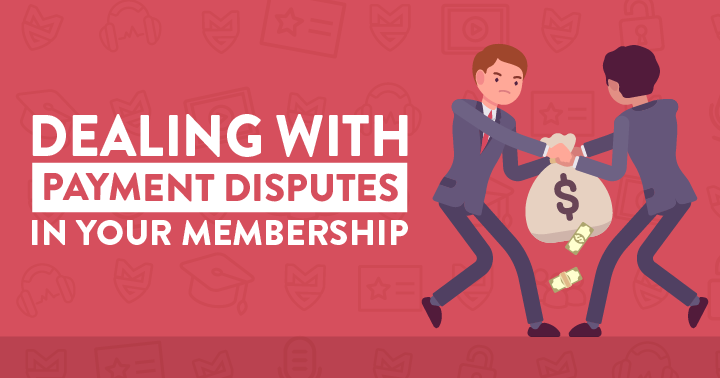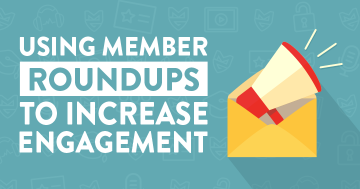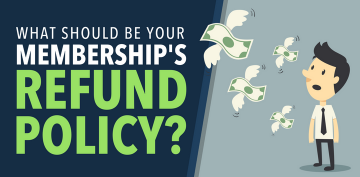Payment disputes are a reality of running any business, including membership sites.
Luckily, they don’t happen often.
But when they do, they take valuable time away from your business and revenue generating activities.
Since starting Membership Academy, we have had over 6,000 members and only 20 payment disputes.
It’s not a regular thing, but it does take time and it’s a hassle when they happen.
So, knowing what to do and how to minimize the risk is important.
The typical process for payment disputes:
Payment disputes happen when a customer files a complaint with their payment processor, their credit card company or their bank.
There are legitimate disputes in cases where a credit card was stolen or credit card fraud has taken place.
And then there are illegitimate reasons, like someone claiming “non-delivery of product” when you know for a fact they've been logging in and using your membership.
When a dispute is filed, the payment provider informs you that complaint has been lodged and freezes the amount owed to you on their end while the dispute is being investigated and until you respond.
You then have a decision to make.
Accept the dispute and move on with your day, taking the hit.
Or, you can stand up and fight.

If you choose to fight, you will need to provide evidence or some explanation why this is not a legitimate cause for requesting money back.
The payment provider will then assess both sides of the situation and make a final decision.
So, let’s take a look at the steps to take when you receive a payment dispute from a payment provider:
1) Find the reason behind the dispute
Determine if the complaint is due to fraud or another legitimate cause.
Typically, if it is a valid reason such as credit card fraud, then the most reasonable course of action is to accept the dispute and move on.
If the reason is for non-delivery of product, then this means you will have to put on your Sherlock Holmes hat and get into detective mode.
Is their claim that you did not deliver on your membership site product true?
2) Gather the evidence
One of the benefits of an online product is that you have a clear paper trail of the way in which members access your site.
Find the answers to the following questions:
- Have they ever logged in?
- Have they participated in your community forum?
- Have they opened their emails?
- Does their IP address and location match the contact or billing information you have for them?
- Have they been consuming content and downloading materials?
- Where are they logging in from? Does it match with the location that’s in their billing address details? If not, then it could be a legitimate claim.
Your investigation may prove that the person is lying and is trying to get their money back illegitimately.
If that is the case, make sure to take plenty of screenshots that you can use as evidence and demonstrate the tracking record that proves this person has had access. This will help your case.
3) Contact the customer directly
If you can show that someone’s claim is without merit, then it may be worth contacting the customer directly.
This is a worthwhile exercise that can resolve the issue for both of you.
Be kind, courteous and curious. Find out about their reasoning and why they made the claim. It may be a simple misunderstanding that has a simple explanation.
Be prepared with your evidence and let them know that, for example, you noticed they logged in at a certain time on XYZ date or they downloaded your e-book.
If you determine from the discussion that the person does not want to pay for your site any longer, then offer to issue a refund only if they withdraw the payment dispute.
Why?
Sometimes people file a dispute because they don’t think they will get a refund if they ask you directly, or they don’t’ know how to reach you.
Inform them that disputes actually harm your business and you will be charged additional fees which is unfair in the instance where you did nothing wrong!
If they are reasonable people (and not complete jerks), most of the time, they are likely to withdraw their complaint knowing they will get their money back. This is the best outcome you can hope for.
4) Provide evidence to the payment provider
If someone resists removing the dispute, you can suggest that it’s not in their best interest to do so, because you have the back-up evidence proving that their dispute is false and winning the dispute is unlikely.
In this case, you will need to move ahead with dealing with the payment provider.
Also, if you can’t get a hold of the buyer, then you will need to respond to the provider as well.
When you get in touch with Stripe, PayPal or Visa, make sure you explain what your digital product is all about.
Then provide the clear evidence that the customer's claim is baseless with your screenshots and paper trail of their membership site access.
But here’s the kicker.
Even if you can prove, beyond a shadow of a doubt, that someone is filing a totally nonsense payment dispute, and even if the payment provider believes you, they won’t always side with you.
And they won’t resolve it in your favour.
This happens typically when a customer complains to their credit card provider.
Many credit card companies have guarantees in place that will give their account holder their money back no matter what the situation.
So, you may ask yourself, “What’s the point of fighting back? Is it worth it?”
Was it worth it for Luke and the Resistance to risk their lives and fly straight into the Death Star?
YES! Yes, it was!!
You want to maintain good standing with your payment provider and that happens only if you continue to show proof of illegitimate non-delivery of product claims.
Here are some ways you can minimize the chances of payment disputes:
1) Have a clear refund policy
Sometimes, the only way a customer thinks they can get their money back is to file a non-delivery of product dispute.
They don’t realize they can get their refund directly from you.
You can hardly blame them, considering that 49% of membership owners have a ‘no refunds' policy.
It’s very important to make sure your refund policy is clear and readily available on your sales page and in your terms and conditions.
If you are clear about your refund policy, then customers have a course of action with you rather than through their payment provider, which is what you want.
Having a refund period that is fair is a good way of reducing the number of disputes that are filed against you.
2) Contact and customer support information is easily available
Make it obvious how they can get in touch with you first so they don’t file a dispute with their payment provider!
And allow members to self-manage their subscription so they can cancel themselves if they want to.
If the process to cancel is too hard or tricky, then the alternative option to cancel their PayPal subscription and file a dispute is easier than working with you directly.
Having a lack of contact information also gives the impression that you aren’t receptive to customers contacting you in general and that issuing refunds is not an option.
3) Review your marketing messaging strategy
Are you over promising and under-delivering?
Are you attracting the wrong people with your scarcity messaging?
If you are using fear tactics in your messaging or are exaggerating the results that you deliver, you could be attracting the wrong type of audience.
Pushing people into joining your membership site is the wrong approach, and it can have the side effect of people who regret making the decision to work with you.
4) Test your login workflow
Make sure the login process is functioning properly.
It may be that your customers are having trouble logging in and it’s not clear why.
You don’t want them to feel scammed at the start of their journey with you, starting with the login screen.
5) Refine your onboarding process
Taking care of your new customers as soon as they become members is key.
Get people involved in your community when you are onboarding them. Make sure you introduce yourself with a personalized introductory email or direct message on your site.
You want your new members to experience that connection with you and get them using the site regularly.
Enable them to have good results with your site at the start.
Then, if for whatever reason, a new member wants their money back you have made the connection with them and they have the knowledge and comfort level within your site to be able to cancel. Avoid the dreaded payment dispute by making it easy and obvious for them to cancel directly with you.
The point is, payment disputes are inevitable.
But realize that you do have some control when you know how to handle them and how you can prevent them from happening in the future.
Any colorful payment dispute stories you wish to share? Head over to our Facebook Group to share your experience.






